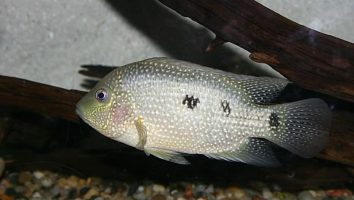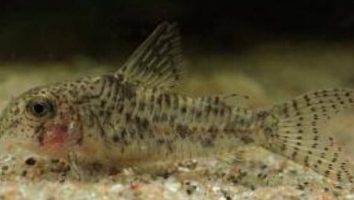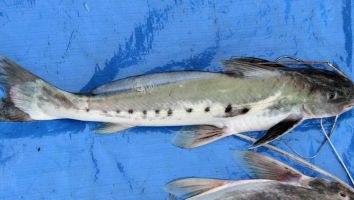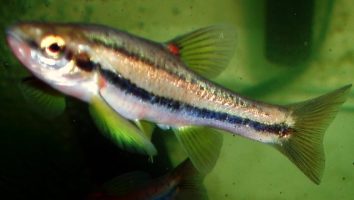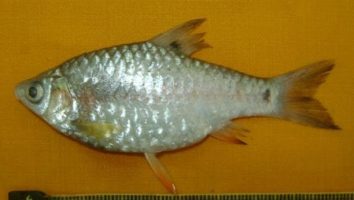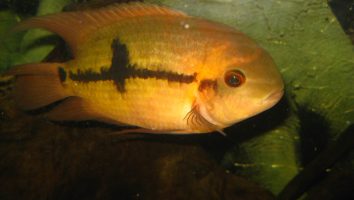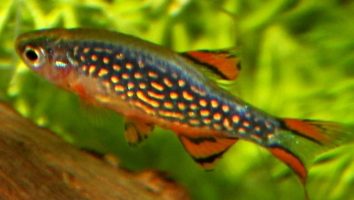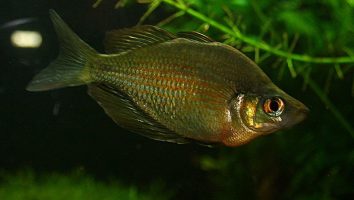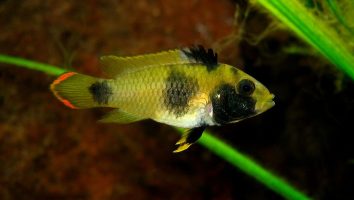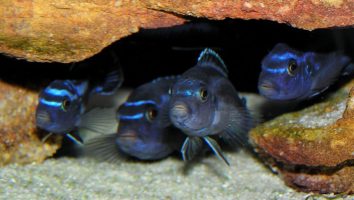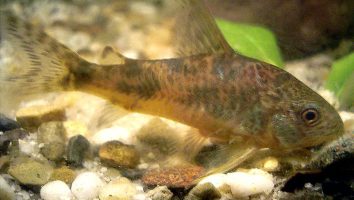The alligator gar is a giant freshwater fish that can reach lengths of over 10 feet!
This species is native to North America and can be found in slow-moving rivers and lakes.
Alligator gars are unique-looking fish with a long body, large scales, and a toothy snout. They’re often considered to be a “nuisance” species due to their size and voracious appetite.
In the wild, alligator gars are known to eat just about anything they can fit in their mouth. This includes other fish, reptiles, mammals, and even birds!
While they’re not the most popular fish in the aquarium trade, alligator gars can make interesting and low-maintenance pets.
In this guide, we’ll teach you everything you need to know about alligator gar care. From tank size and diet to tank mates and lifespan, it’s all here!
Table of contents
Species overview
Alligator gar (scientific name: Atractosteus spatula) are a type of fish that’s native to North America, primarily in the southern United States. They are the largest freshwater fish in the entire country and can grow to be quite large (up to 10 feet in length)!
Alligator gars prefer slow-moving waters with a lot of vegetation. This could be anything from ponds and lakes to marshes and swamps.
Due to their size and the fact that they’re a predator, alligator gars can be quite dangerous. They’ve been known to attack and kill humans on occasion, which is something to be aware of if you live in an area where they’re present.
If you’re interested in keeping one of these fish as a pet, it’s important to note that they require a very large tank (at least 200 gallons). They’re also not the easiest fish to care for, so it’s important to do your research before getting one.
Appearance
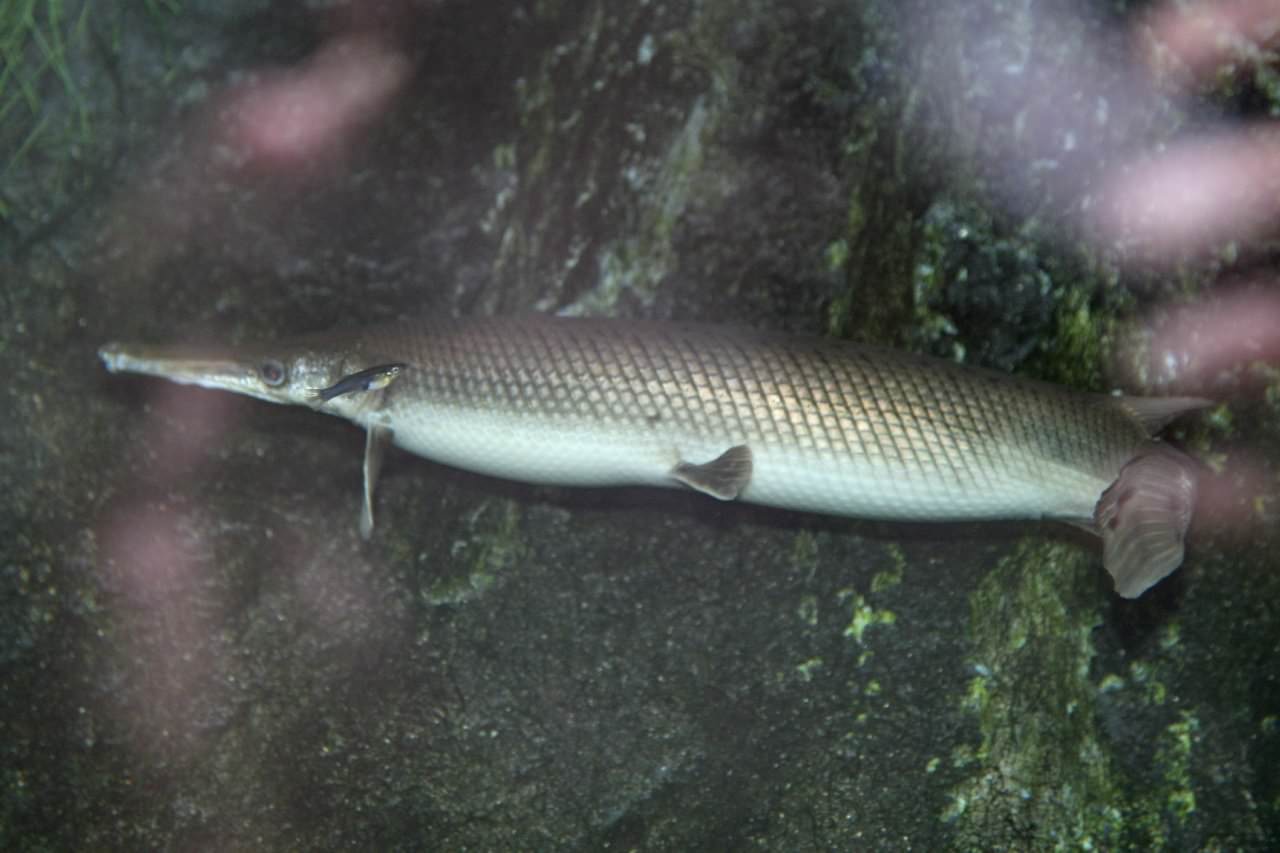
The Alligator Gar is one of the most intimidating freshwater fish out there. They have a long, thin body that can reach lengths of up to 10 feet!
These fish have a row of large scales running down the middle of their back. These are called scutes and they’re very tough. The scutes on the Alligator Gar are what give them their “alligator” nickname.
Alligator Gars have a large head with a very long and pointy snout. They have rows of large teeth that can reach up to 4 inches in length!
The dorsal fin on these fish is located far back on their body and is very tall. The anal fin is located about halfway back on the body and is also tall.
Alligator Gars have a long, thin caudal peduncle that leads into their large, paddle-shaped caudal fin.
The coloration of these fish can vary quite a bit. They can be olive green, brown, or even almost black. The belly of the Alligator Gar is usually a lighter color than the rest of their body.
Lifespan
In the wild, alligator gars typically live for 20 to 30 years. But in captivity, their lifespan is often much shorter.
One of the reasons for this is that alligator gars are very difficult to keep in captivity. They’re very large and require a lot of space. They also have specific dietary requirements that are often hard to meet.
All of these factors can lead to a shorter lifespan in captivity.
Size
Alligator Gars are one of the largest freshwater fish in the world, and can grow to be massive! The average size of a wild Alligator Gar is between 6 and 8 feet long, but they have been known to grow up to 10 feet or more in length. In captivity, they typically reach between 4 and 6 feet in length.
Tank
Tank Size
The recommended tank size for Alligator Gar is 1000 gallons. This is due to their large size and their aggressive nature. If you’re looking for a smaller fish that can fit in an average-sized tank, this is not the fish for you.
If you want to keep two Alligator Gars in the same tank you’ll want to add at least another 1000 gallons to that minimum number if you want them to thrive.
Water Parameters
Alligator Gars are one of the most unique and prehistoric-looking freshwater fish available in the aquarium trade.
Their massive size, razor-sharp teeth, and reptilian appearance make them a fish that commands attention.
While their size and appearance are intimidating, they are actually a fairly peaceful fish. They are also very hardy, making them a great choice for beginner aquarists.
Alligator Gars are found in slow-moving rivers and lakes in North America. They prefer warm water with a pH between 6.5 and 7.5.
The water temperature should be between 75 and 85 degrees Fahrenheit. Alligator Gars are not very tolerant of cold water and will go into shock if the temperature drops too low.
- Water Temperature: 75-85 degrees Fahrenheit
- pH Levels: 6.5-7.5
- Water Hardness: 5-19 dGH
- Alkalinity Levels: 3-10 dKH
What To Put In Their Tank
Alligator Gar are a bit different than most of the fish on this list. They’re actually a bit easier to care for since they don’t need any special decorations or substrate in their tank.
A lot of aquarists like to include a piece of driftwood or two in the tank. This not only looks good, but it also provides a place for these fish to hide if they need to.
Other than that, feel free to use whatever substrate you want. These fish don’t spend a lot of time at the bottom of the tank so the type of substrate isn’t as important as it is for other species.
One decoration we recommend avoiding is plants. Alligator Gars are known to uproot and eat plants (even tough ones), so it’s best to just avoid them altogether.
Common Diseases
The Alligator Gar is a hardy fish that isn’t too susceptible to diseases. However, there are a few things that you should look out for, just in case.
The most common illness that these fish experience is parasites. These can be anything from worms to leeches, and they can quickly make a meal out of your fish if left unchecked.
The best way to deal with parasites is to treat the entire tank, not just the affected fish. This will ensure that all of the parasites are killed, and it will also help to prevent re-infestation.
There are a few other illnesses that these fish can get, but they’re not as common. Things like bacterial infections and fungal infections can occur, but they’re usually not too serious.
As with any fish, the best way to keep your Alligator Gar healthy is to provide clean and stable water conditions. A well-maintained tank will go a long way in keeping your fish happy and disease-free.
Behavior & Temperament
The alligator gar is a solitary creature that is more often seen alone than in groups. In the wild, these fish tend to stick to themselves, only coming together to mate. The same is true for alligator gars in aquariums.
While they may not be the most social fish, alligator gars are relatively peaceful. They’re not known for being aggressive and will leave other fish alone as long as they’re not being bothered.
The alligator gar is a top predator, so it’s important to be aware of that when stocking your tank. These fish have been known to eat smaller fish, so it’s best to avoid keeping them with anything that could fit in their mouth.
Alligator gars are also known for being jumpers. They’re strong swimmers and have been known to jump out of aquariums that aren’t properly sealed. So, if you’re keeping an alligator gar, make sure your tank has a tight-fitting lid.
Tank Mates
Alligator Gars are typically solitary fish. They’re not social creatures and don’t interact much with other fish.
For this reason, it can be difficult to find good tank mates for Alligator Gars. They’re not impossible to keep with other fish, but it’s definitely a challenge.
The best tank mates for Alligator Gars are other large, fast-moving fish. These fish need to be able to out-swim the Alligator Gar and avoid being eaten.
Some good choices include:
- Arowana
- Peacock Cichlid
- Oscar
- Green Terror
- Convict Cichlid
- Jack Dempsey
- Pleco
Breeding
Alligator Gars are a fairly difficult species to breed. They have very specific water requirements and their fry are very delicate.
The first step is to set up a breeding tank. It should be at least 200 gallons and have a water temperature between 80 and 82 degrees Fahrenheit. The water should also be very soft with a pH between 6.5 and 7.0.
Next, you need to add some plants and hiding places. Alligator Gars like to lay their eggs in plants, so make sure to include a good amount.
When the tank is ready, add two males and two females. The males will be larger with a more pronounced snout.
The next step is to trigger spawning. You can do this by slowly raising the water temperature by a couple of degrees over the course of a week.
Once spawning begins, the female will lay her eggs in the plants. The male will then fertilize them.
It’s important to remove the adults at this point. They will eat the eggs if given the chance.
The eggs will hatch in about two weeks. The fry are very delicate and need to be fed live food. You can offer them brine shrimp or bloodworms.
As they grow, you can slowly introduce them to pellets and other dry foods.
Conclusion
The Alligator Gar is a truly impressive fish species that is sure to add some excitement to your aquarium. They’re relatively easy to care for but do require some specific conditions to stay healthy.
Overall, we think the Alligator Gar is a great fish for experienced fishkeepers who are looking for a new challenge. They’re not for everyone, but if you’re up for it, they’re definitely worth considering!

